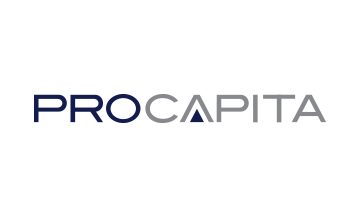The disruption caused by the pandemic has left many firms struggling to recruit, retain and engage the employees and teams required to succeed in the new economy. How can you ensure that your people processes set you up for success?
As the world tries to recover from the impact of the last 18 months, your business has most likely moved further away from a centralised, office-based work environment. It’s also likely you will be grappling with changes to operating models and supporting infrastructure, which in turn may have highlighted significant capability gaps.
Having the right people in the right roles is fundamental for being able to rebuild and renew business performance with confidence. Hiring and retaining the right people has always been a difficult, costly and risky process, and carrying this out in a world that is gradually recovering from crisis is even harder.
Recruiting rapidly and remotely, onboarding and integrating new team members into established structures, whilst continuing to motivate and engage existing staff as their roles evolve, are major challenges for businesses worldwide. Get this right and you can achieve anything. Get it wrong and you’ll face workforce disharmony, rising costs and failure. You will need a dedicated strategy to help you identify, onboard and retain the right people with confidence.
How a recruitment process benefits your business
Recruitment processes differ from business to business depending on company size and structure, industry and role. Yet a strong recruitment process can create a standardised approach to hiring, which ensures quality and appropriate consideration of candidates and, as an added bonus, mitigates the risk of unconscious bias.
The benefits of implementing a defined recruitment process in your business include:
- Improved productivity
Hiring staff with high potential and strong team fit will create healthy competition within teams to remove complacency and improve productivity.
- Cost savings
Internal recruitment can save on recruitment costs and hiring the right candidate first time can save a business between 4 and 15 times their annual salary.
- Quality talent pools
Identifying quality candidates quickly can drive productivity and growth within a business by accelerating role filling and creating a pipeline of talent.
- Faster hiring
A clear process will increase efficiency, make your organisation more appealing to candidates in the future and fill the open position faster.
- Reduced unconscious bias
An objective recruitment process will mitigate the risk of bias, which has been shown to reduce innovation revenue by as much as 19% (HBR, 2018).
How to develop an effective recruitment process
Now we know that strong recruitment processes are a critical enabler for transitioning successfully to the new economic landscape, here is how you can develop an effective recruitment process. Applying these key steps to your process will enhance efficiency:
1. Define the vacant role clearly
Set yourself up for success by taking time to identify the needs of the business before preparing a job description. This will lead to more suitable applicants, more objective decision-making and longer-term hires. Remember, a well written job description gives candidates clear parameters and explicitly identifies the expectations of the role in question.
2. Attract the right candidates
In a competitive market, it is especially important to showcase your employer brand through a variety of online recruitment platforms. Make sure that you use keywords to attract relevant candidates and remember that the user-friendliness of your application is key. According to Glassdoor, 1 in 4 people won’t apply for a job if a company’s website isn’t mobile optimised.
Similarly, your business’ presence on social media can be the difference between securing the right candidate and watching them go to a competitor. Platforms such as Glassdoor provide a powerful opportunity to promote your company to candidates who may not be aware of your organisation.
3. Assess and select effectively
It is important to assess candidates’ competencies and personality traits in the context of the role. Psychometric assessments can be game-changing in that they offer objective insights into the behavioural patterns of candidates, helping you to make hiring decisions with confidence. There are a variety of psychometric assessments that can be useful in the selection process:
- Behavioural assessments will help you learn about candidates’ communication styles and stressors, giving you information about how they will behave as part of a team.
- Personality assessments clarify what new hires would contribute to your company culture and will be especially important when hiring for management positions.
- Emotional intelligence assessments Help you understand a person’s strengths and limitations, how they react under pressure and how self-motivated and adaptable they are.
- Aptitude assessments measure an individual's fluid intelligence, which will help you understand if that individual will be able to quickly grasp the requirements of the role. Additional insights include whether candidates have the capacity to adapt to new challenges, and if they would be suited to drive change through your organisation.
4. Make an offer promptly
Once you have identified the right candidate, make an offer as soon as possible. MRI Network found that 47% of declined offers were due to candidates receiving alternative job offers.
Recruiting technology can make the hiring process fast, easy and enjoyable for you and your candidates, who can now apply for jobs by smartphone, take interactive assessments and self-schedule online interviews. Ensure you move through the process as quickly as possible internally so that ideal candidates aren’t snapped up by another employer.
We've been using Thomas assessments ourselves for years, and we believe that Thomas Perform will make it even simpler to identify candidates' strengths and limitations, communication style and at a much earlier stage of the recruitment process.
- Nour Sbitany, Assistant HR Advisory Manager

5. Induct new hires thoroughly
Thomas International’s 2021 Mind the Trust Gap research report identified that 57% of new hires are not working out in some capacity, and according to the CIPD, 34% of organisations struggle to retain staff past the 12-month mark, so effective onboarding is essential. Induction to the role, team and company culture should be tailored to the individual using the information gathered from assessments during the recruitment process.
This information can also be used to focus the training and development of new staff in a hybrid or remote working environment, along with mentoring and pairing schemes. Once new recruits have been fully onboarded, you will be able to apply metrics to assess the effectiveness of your hiring process.
Recruiting in the recovery period
The recruitment landscape won’t look this way forever. But taking a proactive approach to ensuring that you identify, attract and retain the right people will always give your business an advantage over the competition. An efficient recruitment process saves money and time, and can be instrumental in improving productivity. An appropriate recruitment process helps businesses to set benchmarks and streamline their employee growth plan to leverage greater organisational benefits.
At Thomas International, we use scientifically proven processes to provide organisations like yours with vital insights into the behaviours, talents, personality and capacity for learning of your potential hires. To see how we can help you stay ahead of the recruitment game, download our 2021 Spotlight on Recruitment research report, take a look at our solutions or speak to an expert today.




